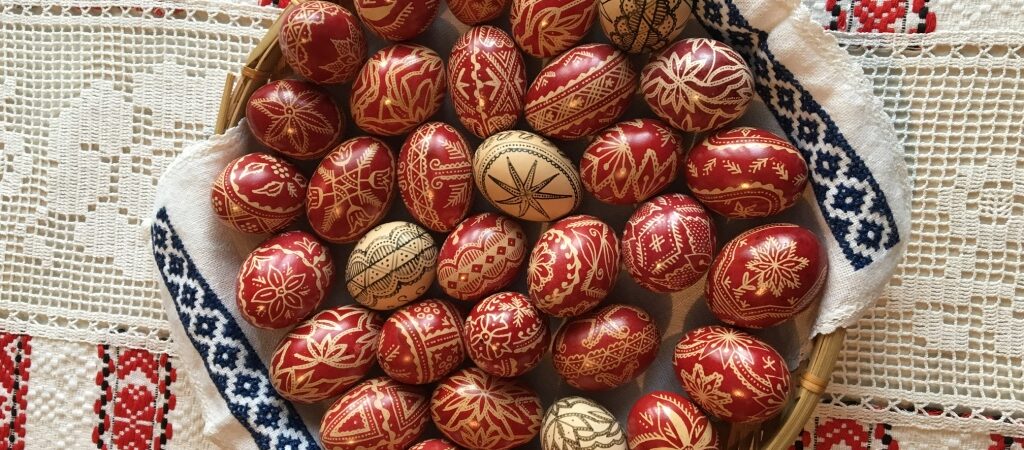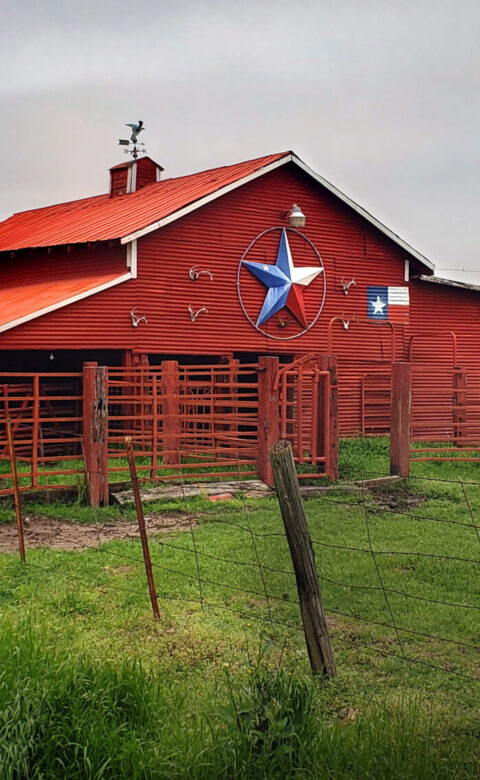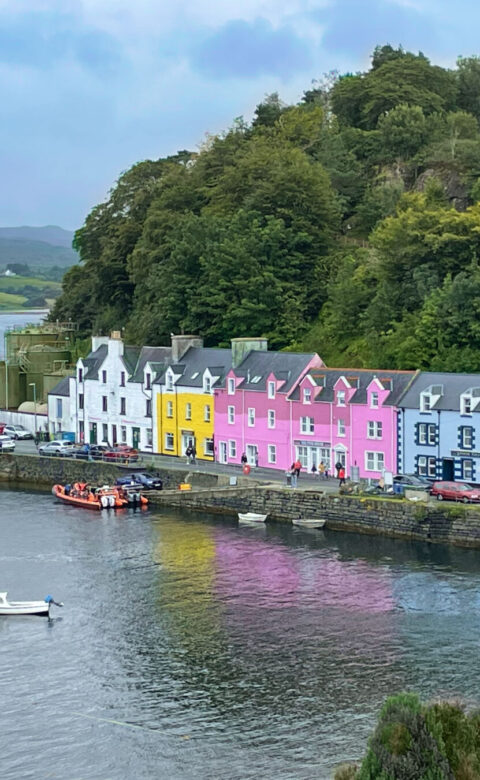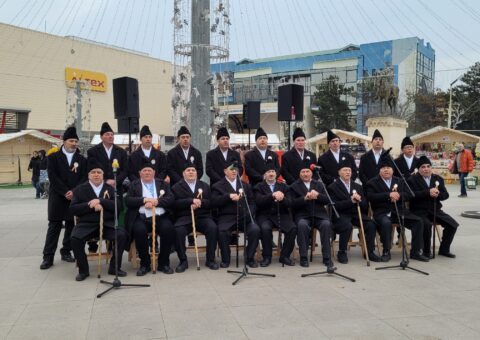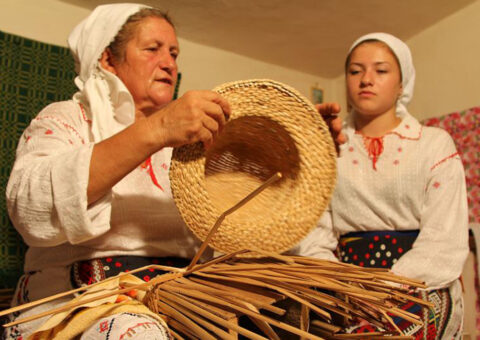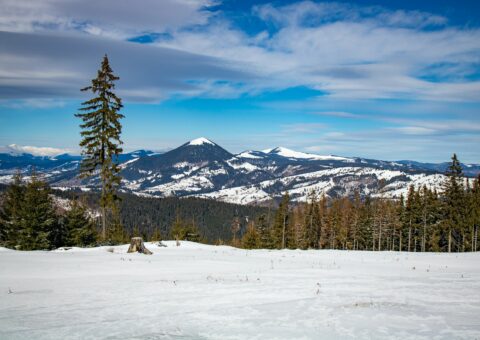In northwestern Romania, people use age-old, trusted agriculture techniques and preserve cultural traditions like egg decorating. For Jeanett Andrea Søderstrøm, slowing down on a visit through the Apuseni Mountains was a temporary way of stepping back in time.
We’re back from a short trek in the hills surrounding the village Rosia and stand absorbing the view of endless green fields. The mountains on the horizon lay like a blurred grey pencil stroke separating the agriculture-focussed foreground from the blue sky. It’s a sunny day, and pointed haystacks typical in this region stand out like golden dots on the fields. Sticks lean against them for enhanced stability with the ground and make them look like a bunch of huge, friendly trolls with long arms.
Suddenly a loud noise interrupts the peace. At first, it’s hard to tell what it is, but our attention is quickly drawn to the road from where the sound is coming. A traveller in my group stands in the middle of the road, far away from us, where he’s waving with his camera.
And then I see it: A couple on a horse with a carriage is approaching. They’re moving surprisingly fast and pass us in an instant, leaving a dusty cloud behind. From where I’m standing, I only get a good glimpse of the wrinkly woman with a headscarf and raise my arm in a response to her toothless smile. She looks over her shoulder and yells something to greet us; the old man next to her is busy steering the horse. The stack of branches on their carriage trailer bounces behind them as they disappear around the next curve.
Rosia is a village in Pădurea Craiului, in the Apuseni Mountains in northwestern Romania. It is famous for its pristine nature and flower fields, traditional agriculture and artisans, wide-ranging mountains brilliant for hiking and biking, and charming villages and guesthouses perfect to kick back in.
Initially, Rosia seemed like a small village to me, but as we visit even smaller neighbouring villages on our way to Dragoteni I realise it’s all a matter of perspective. In these smaller communities, houses made of wood or concrete are painted in a rainbow of colours — green, turquoise, and orange. Their roofs are either flat or pointed, made of tin or occasionally covered up with random planks. Romania’s recent past as a rather closed and deprived country becomes more evident as we move on.
Trees and flowers are well-groomed and abundant, and some houses actually look more like they’re made of roses more than anything else. Cats and dogs emerge from every nook and cranny. Following their universal rule of patrolling the higher levels of a property, the cats sit or walk peacefully on window sills, walls, and roof edges, while dogs stay closer to the people around.
Older folks occupy benches around every corner, and we’re curious about their stories. What are they possibly gossiping about? Men are pushing trolleys or carrying sacks of material down the streets, and they appear behind all sorts of steering wheels. It looks like a drawing from a child’s book, although we don’t see many children.
Why are there so few young people? I ask our guide, Diana.
Diana tells us unemployment is high in Pădurea Craiului, and the most common jobs are in farming and caving, which are hard. Romania has modernised a lot over the last decade; rural life is still predominantly traditional in places like Pădurea Craiului, making it less attractive to young people because of a lack of interesting work. Because of this, most young people leave for the cities to look for work or get an education. Tourism is one sector that offers a possibility of helping to reverse this trend.
Arriving in Dragoteni for the evening, we spend several minutes watching ancient tractors pass by and time-worn women chatting outside of their houses. Huge Canadian geese freely walk around, and farmers take their cows home for the night.
We tear ourselves away from the scene to learn about some other well-loved local traditions: embroidery and egg decorating.
Walking into a garden full of wine grapes and roses, we’re greeted by a middle-aged woman with a warm smile. She wears a flowery blouse and sparkling earrings. They match her workshop, which is filled with colourful pillows, blankets, and scarves.
Our guide translates as the artisan exhibits some embroidered pieces of clothing. She tells us about their symbolism related to seasoned dowry customs in the area. It’s a tradition that is vanishing today due to various reasons.
Decorating eggs is another one of the vanishing traditions. As an old Christian tradition, it’s something I’m familiar with even in my secular home country Norway. There, it’s about kids painting eggs for fun before Easter, but those look quite different from the finely detailed eggs this woman has mastered after decades of practice. One of her goals in life is to pass the skill onto younger generations so the tradition doesn’t die out. It’s a beautiful thing that some people have the drive to protect customs like these, but as we chat, it becomes evident that there are good reasons why traditions change with time.
The artist gathers some empty eggs from a closet and sits down on a child-sized chair in front of a tiny table. It doesn’t look very comfortable to me, but she claims to like it. She lights a candle beneath a box of wax, dips a pencil with a metal tip into the soft wax, and uses it to draw lines on an egg. In a single minute, she has drawn all the lines that create the pattern that will be filled in with colours.
As an amateur artist, I’m interested in learning more, and the artisan encourages me to give it a try. I have a lot of work to do to master the skill, but I manage to draw a few lines on my little egg. The demanding pencilling technique is meditative, but it’s timeless. And for a few brief minutes, I, too, step back in time.

